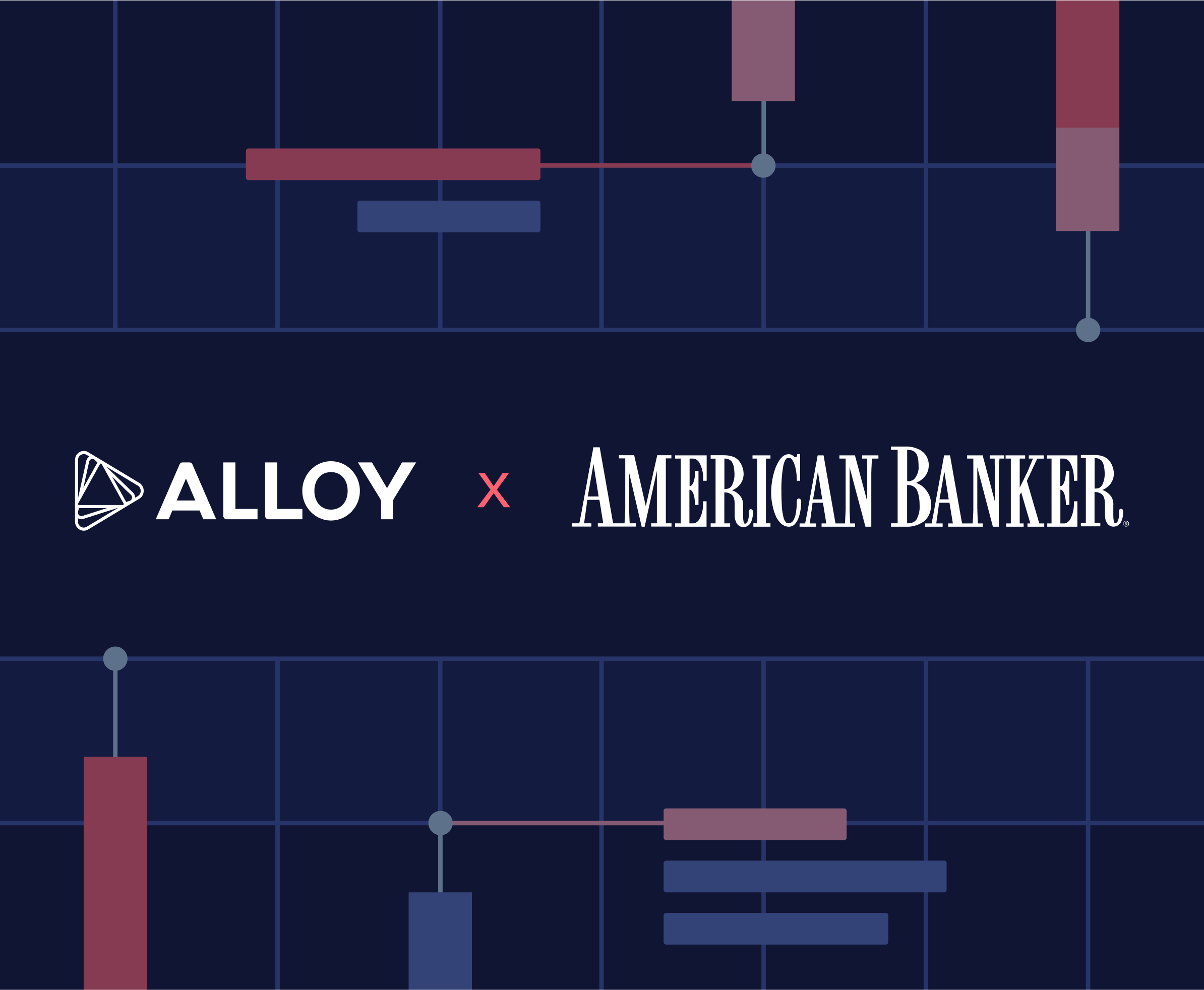Share
Recapping American Banker & Alloy’s webinar, 'Fraud in Focus'
Mar 4, 2025

As fraud tactics become more sophisticated, staying ahead of emerging threats is critical for financial institutions and fintechs.
That’s why we teamed up with American Banker for a webinar, Fraud in Focus: Predictions and Trends for 2025, where I had the honor of representing Alloy on the panel that included an expert from Huntington National Bank. Together, we shared our forecasts on fraud trends, regulatory shifts, and the technologies shaping the fight against financial fraud.
In this recap, I highlight the key takeaways from the discussion and summarize the answers to the burning questions asked by attendees.
Machine learning and AI took center stage
First, let’s take a brief look at one of the themes that predominated our conversation: social engineering scams and AI. Our panelists agreed that AI hype isn’t just a product of the media — it’s being deployed by most financial institutions, and it stands to generate significant gains in proactive fraud prevention and operational efficiencies through automation. But FIs doing so must keep model governance top of mind, and aligning key stakeholders around the purpose and putting the right controls in place is essential to success. In this regard, internal AI steering committees representing a cross section of departments and business lines are becoming commonplace. Their task: to not only assess the use of AI across their enterprise, but then also to moderate it.
Webinar attendees corroborated many of the panelists’ perspectives:
- According to the audience poll, 31% named AI/deep fakes their most concerning fraud challenge in 2025, just behind social engineering/account takeovers.
- Meanwhile, attendees reported that the top areas they are using AI for fraud prevention include supplementing rules-based decisioning (28%) and automating operations/investigations (23%).
Answering your top fraud questions
AI wasn’t the only topic of conversation. We covered a lot of ground and fielded a variety of questions from the audience, some of which I’ve captured below.
According to Alloy’s State of Fraud Report, only 31% of financial institutions surveyed said they lost over $1M in fraud losses. I would think that the percentage should be higher, given how pressing fraud is — why is it so low?
This number was surprising to those of us on the panel, too, since some large banks could go through a rough period and see $1M losses in a single month. I have a few guesses as to why this came in so much lower than expected. First, I think answering questions of this nature can be kind of taboo in our industry. There’s some shame around fraud losses; there’s some concern that even though the survey is anonymous, it could come back accredited to their bank somehow. Is it possible that respondents underreported their fraud losses because of this discomfort? Definitely. Additionally, we suspect that some respondents may not have a full picture of fraud losses across their entire organization, so instead, they answered for their specific line of business.
What are banks doing to educate and prevent their customers from giving out their mobile/online banking credentials and one-time passcodes to fraudsters?
As one panelist pointed out, banks should follow standard procedures like sending emails and using web banners to educate customers. But we have to acknowledge that customers often rush through prompts and payments without thinking, especially with platforms like Zelle. So, the key is to do continuous education, awareness campaigns, and discussions. The media hype around scams helps keep it top of mind for folks, but ultimately, it's about ensuring people pay attention to details like checking for misspelled links, a sense of urgency or a request for personal information.
Do you expect the number of customers who are coerced into committing fraud to increase with the aging population?
I believe scams and social engineering will continue to be a problem and we know that older adults can be more susceptible to these scams; they are often targeted disproportionately. So the question becomes, what can we do about educating that population and what tools can we implement to recognize when that is happening? Models that leverage consortium intelligence are one tool many FIs are now using to do just that.
What can banks do today to get ahead of the next fraud trend that comes up?
There was a discussion about the fact that there are a lot of different things that come together to create strong fraud controls. One of them is good data that helps you see fluctuations in patterns. If, for example, you see a large uptick in applications, you can ask were these tied to a recent marketing campaign or is something else going on?
Another topic we discussed was the value of building a network with peers in the industry. If one institution faces a particular issue, it’s likely others will too, so connecting with others can help. Fraud leaders across banks and credit unions are more willing to come together as an industry to combat the fraudsters , so collaboration is key. Start connecting with each other and be open and transparent. Certainly, do not give away confidential information, but share what you see, where you see potential gaps, and how we can build a product to close those gaps.
It’s also important to have real-time reporting and dashboards to monitor fluctuations, allowing you to identify unusual activity quickly. This helps predict and address potential fraud before it escalates.
Want to learn more?
If you missed the webinar and want to dive deeper into the insights, here are some additional resources for you:
- Watch the Webinar - Catch the full discussion in our on-demand recording
- Read Alloy’s 2025 State of Fraud - Dive deeper into the complete findings behind the session
- Talk to Sara Seguin - Reach out to discuss what’s top of mind





